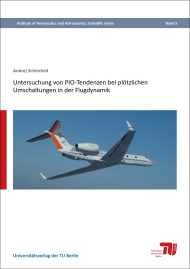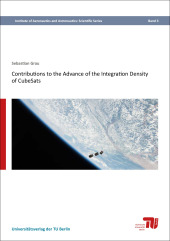Untersuchung von PIO-Tendenzen bei plötzlichen Umschaltungen in der Flugdynamik

Format: 14,8 x 21,0 cm
Publishing year: 2019
The interaction between pilot and aircraft (pilot-induced oscillation, PIO) after a mode transition in the flight control system has not been sufficiently and systematically investigated until now.
Some recent severe incidents of transport aircraft highlighted that severe accidents can occur, if transitions inside the flight control system are involved. This thesis deals with the development of an experimental method to specifically investigate PIO tendencies of sudden changes in the aircraft dynamics (PIO category III). In addition, this thesis investigates, whether mode transitions in flight control laws, which modify flight dynamics and handling qualties, cannot only be a trigger for PIO tendencies but also their cause.
For this purpose a database with different aircraft dynamics of a transport aircraft during the landing approach phase has been created. Its dynamics have been rated by existing handling qualities criteria and by human pilots in a fixed-base simulator. From this database several switching constellations have been generated with a defined relationship between the dynamic behaviour before and after the transition. During a test campaign in a fixed-base simulator with airline and test pilots the different constellations have been evaluated. Besides the usual rating scales a modified transient failure rating scale has been used for the evaluation of the transitions.
The simulator campaign demonstrated that the proposed method is able to expose hidden PIO tendencies. Furthermore, it has been demonstrated that switching constellations exist that show PIO tendencies, although the aircraft dynamics after the mode transition was supposed to be PIO resistent. Closer investigations attributed this to the destabilization of the closed-loop pilot-vehicle system, which is caused by pilot’s capabilities to adapt to a new and modified flight dynamics. Different recommendations have been given to predict PIO tendencies of mode transitions. They should be validated in future studies.



